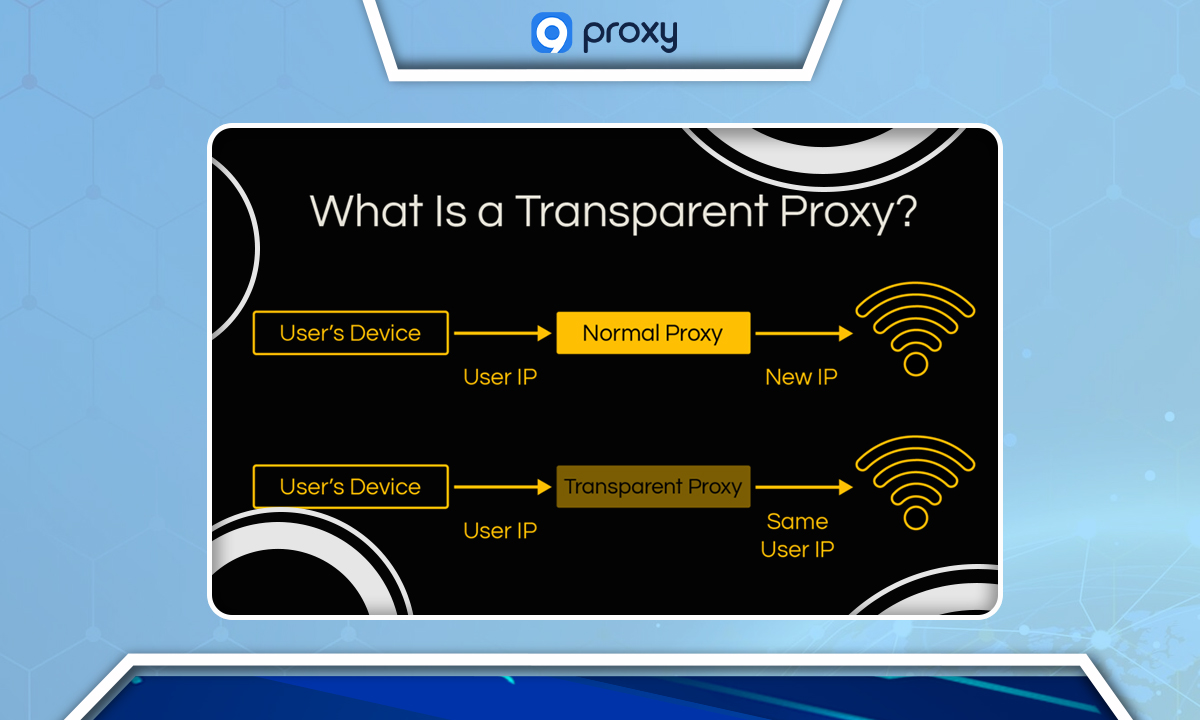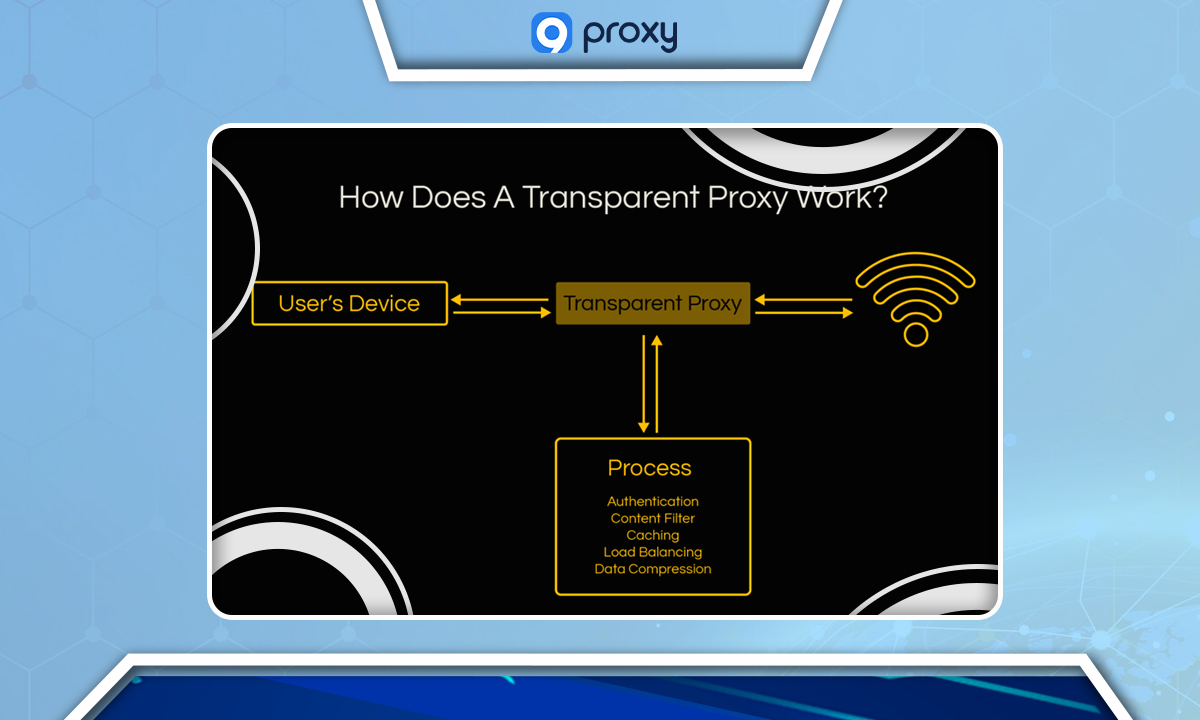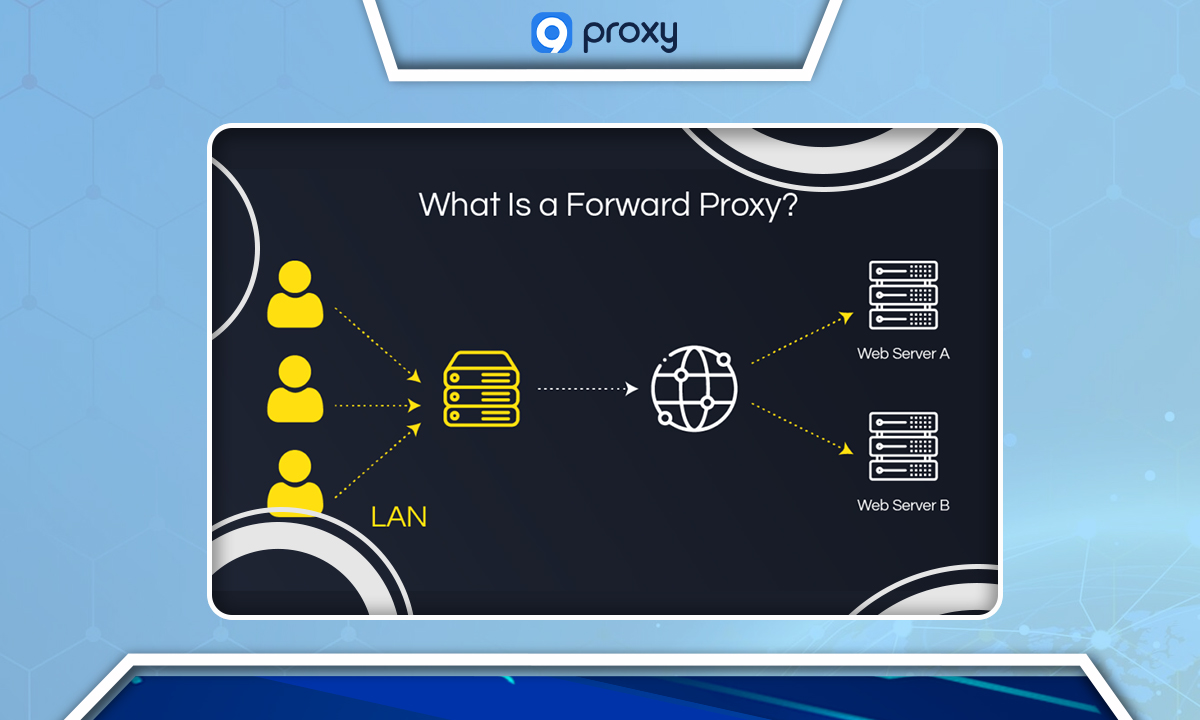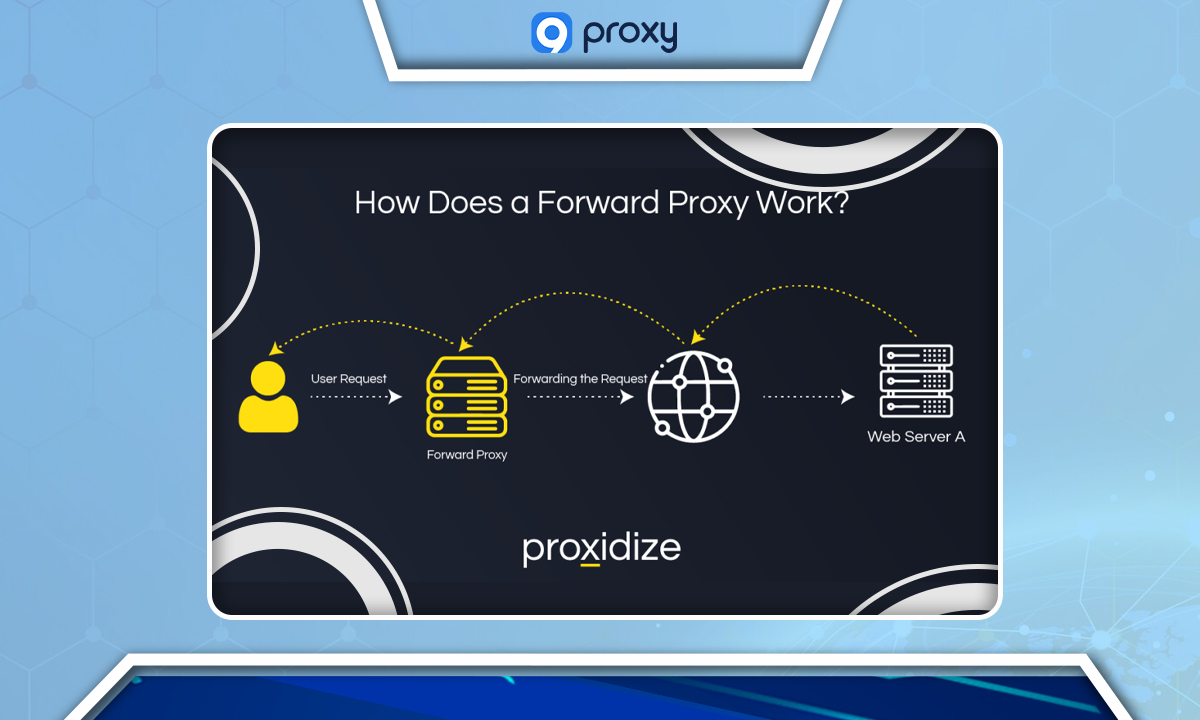Transparent Proxy vs Forward Proxy: Optimal Security & Speed
Transparent Proxy vs Forward Proxy is a crucial topic for network security and management. A forward proxy acts as an intermediary between clients and servers, providing anonymity by concealing clients' identities and blocking unauthorized requests. This makes it popular in environments like schools and banks. Transparent proxies, meanwhile, cache responses to speed up network performance and filter harmful content. Knowing when to use each type can enhance security, protect privacy, and improve network efficiency. Let's explore the specifics of these two proxy types and how they can meet different organizational needs.
What Is Transparent Proxy?
A transparent proxy, or inline proxy, acts as a seamless intermediary between users and the internet. It’s called "transparent" because it doesn't modify any data passing through it and operates without user intervention. This means it can be integrated into a network without requiring any settings changes by the users.
The primary function of a transparent proxy is to cache frequently accessed data locally. This caching reduces bandwidth usage and accelerates the loading times of websites.
Note: Transparent proxies are great for improving network speed and efficiency but may not be ideal for highly secure operations as they neither encrypt data nor conceal user identities.

How Does Transparent Proxy Work?
A transparent proxy functions at the network level, typically within firewalls or gateway devices, making its deployment invisible to both users and websites. It is not configured on individual devices but is centrally managed at critical network points like firewalls or routers.
For instance, when you connect to public Wi-Fi and are prompted to enter details on a login page before browsing, this is usually a transparent proxy in action.
Here’s what happens during its operation:
Request Handling: When a user makes a request to visit a website, the transparent proxy intercepts this request at the network level.
Data Forwarding: It forwards the request to the target server as if it were directly sent from the user.
Response Relay: Once the server responds, the transparent proxy routes this data back to the user, who remains unaware of the proxy's involvement.
Throughout this process, the transparent proxy may cache popular content, block unsafe or inappropriate material, or modify web content for various purposes, enhancing both security and user experience.
Note: Employing a transparent proxy can greatly reduce load times and manage bandwidth more efficiently. However, it's essential to monitor and maintain these setups to ensure they don't inadvertently block important content.

What Is Forward Proxy?
A forward proxy acts as a go-between for one or more user devices and the internet. Rather than simply passing a client's request directly to a web server, a forward proxy evaluates the request first. It decides if any actions are needed - like checking for safety or accessibility - before sending it on to the intended destination.
The proxy also reviews any incoming responses from the web server. It checks and processes these before sending them back to the original client, ensuring that the content is appropriate and safe for delivery.
Note: Forward proxies are particularly useful in environments where internet use needs to be regulated or monitored, such as in schools or workplaces. They help maintain security and compliance by filtering out harmful or not permitted content. Additionally, they can provide anonymity for users, making it harder for websites to track individual browsing habits.

How Does Forward Proxy Work?
When you try to access a website or another online resource, your request doesn't go directly to the server hosting the website. Instead, it first goes through a forward proxy server. Here's a simplified breakdown of how a forward proxy operates:
Request Routing: Initially, your request is sent to the forward proxy. This step is crucial because it means your direct connection to the website's server is never established.
Anonymity and Security: The forward proxy acts as the middleman. It receives your request and then sends it on to the website's server on your behalf. By doing this, the proxy hides your IP address (your digital footprint on the internet) from the website. This is particularly beneficial for protecting your privacy, bypassing geographic content restrictions, or even preventing websites from tracking your browsing habits.
Contact the Website: The forward proxy sends your request to the intended destination server as if it originated from the proxy itself. To the destination server, it appears that the proxy is the one requesting the data, not you.
Receiving the Data: After the destination server processes the request, it sends the data back to the forward proxy.
Data Relay Back to You: The forward proxy then sends this data back to you. As far as you're aware, it seems like you're directly communicating with the website, but in reality, all data passes through the proxy.
This process helps in maintaining a layer of anonymity and security throughout your web interactions, as the websites you visit see only the proxy's IP address and not yours.
Note: Forward proxies are invaluable for organizations to control and manage internet usage, as they can also block access to specific sites and monitor data usage. Additionally, they can enhance security by preventing direct attacks against client machines.

Difference Between Transparent Proxy Vs Forward Proxy
Transparent proxies and forward proxies serve as intermediaries in the communication between a client and a server, but they function differently and serve distinct purposes:
Purpose and Functionality
Forward proxies are used by both organizations and individuals to control internet access and provide anonymity. They sit between your device and the internet, handling all the outgoing requests. On the other hand, transparent proxies work without you knowing, mainly to save (cache) content to make internet connections faster. Internet Service Providers (ISPs) usually use these proxies.
Visibility to the User
Forward proxies are visible, and users need to set them up themselves, making it clear they are being used. They are often utilized to enforce network rules or for anonymous web browsing. In contrast, transparent proxies are completely hidden from end-users. They don't require any setup by the user, offering a seamless experience that doesn't change how users access the internet.
Control and Privacy
In the case of forward proxies, the user or network administrator can adjust settings to create specific internet usage policies and bolster privacy. Transparent proxies, however, afford users little to no control over settings. They are primarily focused on enhancing network efficiency and enforcing ISP policies, often at the expense of individual privacy.
Usage Scenarios
Forward proxies are particularly beneficial in corporate or educational settings for regulating internet access and monitoring usage. They are also favored by individuals who prioritize privacy. Transparent proxies are preferred by ISPs to minimize bandwidth usage through caching and to enforce wide-ranging network policies without requiring user engagement or awareness.
When Should You Use a Transparent Proxy or a Forward Proxy?
Deciding whether to use a transparent proxy or a forward proxy depends on your specific needs for network security and management.
If your main goals are easy deployment and effective content management, a transparent proxy might be the right choice. Transparent proxies work well in settings where it's not necessary for users to be aware of the proxy - such as in workplaces or schools where controlling access to certain types of content is important.
On the other hand, if you value increased security and detailed control over network traffic, a forward proxy could be better suited. This type of proxy is ideal for environments like educational institutions or financial organizations, where it's crucial to protect access to external digital resources.
Note: Transparent proxies can significantly streamline network operations by reducing setup complexities, which is particularly beneficial in large-scale deployments. On the other hand, forward proxies provide an extra layer of security by handling outbound requests, which is ideal for sensitive environments.
FAQs
Can a Transparent Proxy Help Improve Internet Speed?
Absolutely, transparent proxies can enhance internet speed by caching frequently accessed content. This caching mechanism reduces bandwidth consumption and speeds up content delivery, as it allows data to be served from the local cache rather than fetching it repeatedly from the original source.
Are Forward Proxies Suitable for Personal Privacy?
Yes, forward proxies are particularly effective for enhancing personal privacy. They conceal a user’s real IP address from external websites and servers, offering a layer of anonymity that is crucial for secure and private browsing.
What Are Some Common Tools or Software Used for Setting Up Transparent Proxies?
Squid is a widely recognized open-source tool ideal for setting up transparent proxies. It provides robust features for caching content, optimizing traffic, and enforcing access policies.
Conclusion
The discussion of "transparent proxy vs forward proxy" highlights a key choice in network management and internet security planning. Transparent proxies are favored for their smooth integration and automatic enhancement of network performance. They are crucial in settings that require efficient content management and straightforward policy implementation. In contrast, forward proxies are noted for their strong privacy protections, detailed control over network access, and advanced security features, making them particularly useful in places like businesses and schools. Each type of proxy has distinct functions designed to meet specific needs in various network situations. Fully understanding their individual strengths and limitations is vital for making informed decisions that align with organizational goals, ensuring optimal security, privacy, and network performance.
Get Newsletters About Everything Proxy-Related
